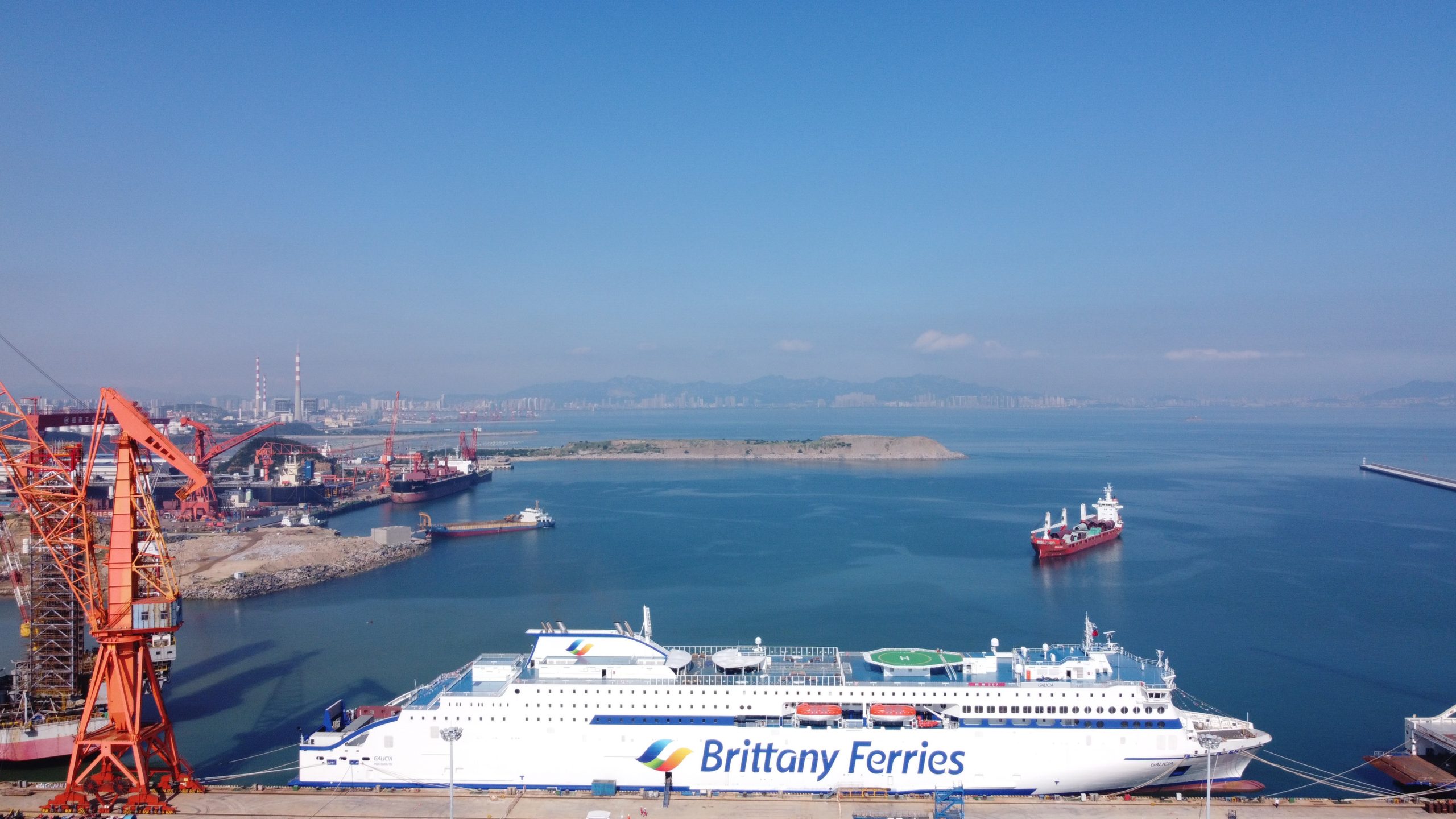Press Release: The technology group Wärtsilä will supply its hybrid propulsion system for three new RoPax vessel currently built for Stena RoRo, Europe´s largest ferry company. Two of the ferries will have a battery capacity of 11.5 MWh, making them the marine industry’s largest hybrid vessels to date. This battery power is approximately double that typically being used currently for hybrid propulsion. The order was placed in May 2022.
The ships have been designed and developed by Stena RoRo and Brittany Ferries and they will be long term chartered to Brittany Ferries for operation between Portsmouth in the UK and French ports of St Malo and Caen. Wärtsilä had already earlier been contracted to supply a broad range of solutions for the vessels, including the main and auxiliary engines, gearboxes, controllable pitch propellers (CPPs), thrusters, the fuel gas supply system, Nacos navigation and automation as well as integrated control alarm and monitoring system. The ships will be capable of operating with either LNG fuel or batteries.
The vessels will be equipped with the latest generation Leclanché energy storage system – the Navius MRS-3 – which has both a size and weight advantage versus comparable marine batteries.
“Stena wants to be a frontrunner in decarbonising our fleet and, together with our partners, pushing developments towards zero emission operations,” says Per Westling, Managing Director, Stena RoRo. “Hybridisation allows our vessels to be highly flexible as we adapt to future technology developments, including green fuels, fuel cells, bigger batteries, and solar or wind supported propulsion.”
“Brittany Ferries is proud to be taking a lead in sustainable shipping, working with our partners to bring cleaner vessels to the regions in which we operate,” added Christophe Mathieu Brittany Ferries CEO. “Hybrid technology continues to move our fleet renewal programme forward and will follow the introduction of two LNG-powered ships. From day one of operation, ports like St Malo in France and Portsmouth in the UK will benefit from these cleaner hybrid vessels. Shore-side power capability means further benefits will be realised, as investment by ports in plug-in infrastructure allows.”
“Hybridisation is one way of shaping decarbonisation of the marine industry. This order further strengthens Wärtsilä’s leadership in the hybrid segment. The extensive battery size will allow the vessels to operate with full power, using both propellers and all thrusters to manoeuvre emissions-free in and out of ports, even in bad weather. The built-in shore power solution will charge the batteries while berthed,” comments Håkan Agnevall, President & CEO, Wärtsilä. “Wärtsilä’s unique Energy Management System will optimise the total hybrid propulsion system.”
Important elements of hybrid vessels include the ability to integrate multiple vessel systems and real-time optimisation of the on-board energy system. Wärtsilä combines a wide range of system expertise across a broad range of ship power and propulsion machinery. Combining the benefits of the hybrid propulsion system and shore power leads up to 15% GHG emissions saving to a conventional diesel mechanical propulsion system.
The vessels are being built at the China Merchants Jinling (Weihai) Shipyard. Delivery of the ferries is expected to take place in 2024 and 2025.
































